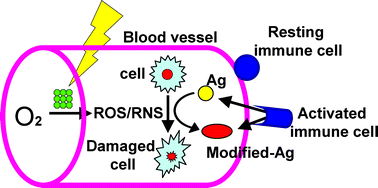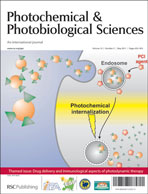The development of cancer is tightly related to the successful evasion of neoplastic tissue from immune system surveillance, which represents a key obstacle in tumor therapy. Most conventional therapies (surgery, chemotherapy and radiation) target the tumor cells directly or indirectly, while immunotherapy attempts to enhance host anti-tumor response. In a manner similar to surgery, photodynamic therapy (PDT), also a local tumor therapy, aims at tumor ablation in its initial acute phase. Treatment success is mainly determined by tumor eradication and the absence of local recurrences. However, experience gained over several decades of therapeutic application has repeatedly hinted at long term therapeutic effects of PDT, suggesting activation of the immune system by this treatment modality. Such contribution of the immune system to treatment success was widely confirmed in many laboratories in various preclinical and some clinical studies. In this present short review, we wish to present our modest contribution to this potential therapeutic trend describing the immune response upon application of a novel photosensitizing methodology: vascular targeted photodynamic therapy (VTP) developed in our laboratories. This modality differs from classical PDT in most aspects (sensitizer: Pd-bacteriochlorophyll and consequent spectral wavelength in the near infrared, the generated photochemistry, the treatment target, treatment objective, treatment protocol and more). For example in contrast to the tumor cells that constitute the target of classical PDT, the targets of VTP are the tumor-feeding arteries and draining veins whose almost instant occlusion (minutes) leads to tumor blood stasis and eradication. Some of the mechanistic features of the induced immune response, such as innate and acquired cellular and humoral mediators, induction of new antigens, resulting from oxidative modifications and implications for anti-tumor vaccination in this different treatment environment, are discussed. VTP is about to enter phase III clinical trials for the therapy of prostate cancer and the potential involvement of the immune system may contribute an interesting aspect for the understanding and future development of this treatment modality.


 Please wait while we load your content...
Please wait while we load your content...